Navroze, the Iranian spring festival that heralds the new year, is observed by Hindus and Muslims, albeit in different versions. This year, Sunday mid-day steps out of Parsi baugs to see how it is celebrated across the country

The Navroze offering at the imambara of Princess Naghat Abedi of Rampur
Four years ago, at Delhi’s Lodhi Gardens, words in Dari Farsi reached 30-year-old librarian Laila Azimi’s ears. It was the dialect of her hometown Kabul, and she found the speakers were Pashtuns and Uzbeks, and like her, they now lived in India’s capital. Today, they are Azimi’s second family, celebrating special days and festivals together. This year too, on Navroze, when the sun enters into the sign of Aries on March 21, marking the beginning of the Persian new year, Azimi will be celebrating it with her new friends and family.
ADVERTISEMENT
Navroze, meaning, new day, is celebrated by the Zoroastrians and Shia communities all over the world. Azimi tells us that while there are some similarities, the Afghans add haft mewa (seven fruits) to the ceremonial food platter, (or instead of) the haft sin (seven items to decorate the new year table starting with the letter ‘S’), which is common in Iran.
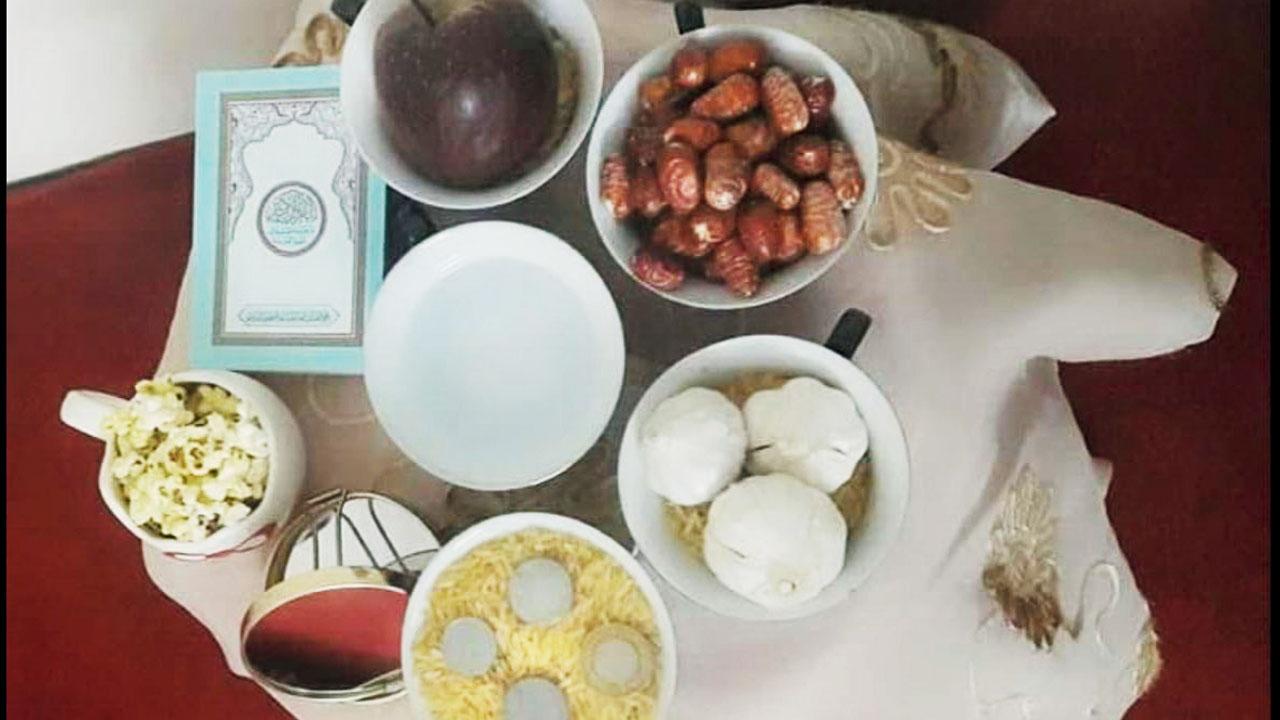
In Afghanistan, haft mewa (seven fruits) is kept on the ceremonial food platter, in addition to, or instead of the haft sin (seven items starting with sibilant ‘s’), which is common in Iran
Haft mewa is a fruit salad made from seven dried fruits—raisins, senjid, pistachios, hazelnuts, prunes, walnuts and either almonds or plum fruit—served in their own syrup. “Some people skip it because it isn’t easy to find some of these dry fruits in the city or they are too expensive,” says Azimi. “We do make Navrozi cookies [chickpea, rice, sohan and walnut variants], sabzi chalaw [a dish made from rice and spinach], and mahiwa jelabi [like Indian jalebi] and fried fish.”
The night before Navroze, the table is set with haft sin—senjid (wild olive), seeb (apple), serka (vinegar), seer (garlic), sabza/samanak (wheat sprouts), sika (coin) and samaroq (mixed vegetables). “We first wish our grandparents, who pray for our dreams and happiness,” continues Azimi. “In Delhi, we wear traditional clothes and meet at Nehru Park, Sunder Nursery or Noori Garden to sing and dance. The camaraderie is evident. While some of us don’t feel like celebrating due to the war situation back home, we keep reminding each other of how this is our way of keeping our culture alive for the next generation.”
Rampur mein Navroze
Interestingly, the ancient Iranian spring festival was integrated into Islam’s Shia sect by the religious leader Imam Jafar, who prescribed special prayers and fasts for it. In her book, Degh To Dastarkhwan: Qissas and Recipes from Rampur Cuisine (Penguin, Rs 399), author Dr Tarana Husain Khan describes how the celebration is rich in symbols of life in the form of elaborately decorated display of mirrors, newly sprouted wheat, candles, sweets and fruits. On the 13th day of the new year, the greens are set afloat in a natural body of water to release the old and welcome the new.
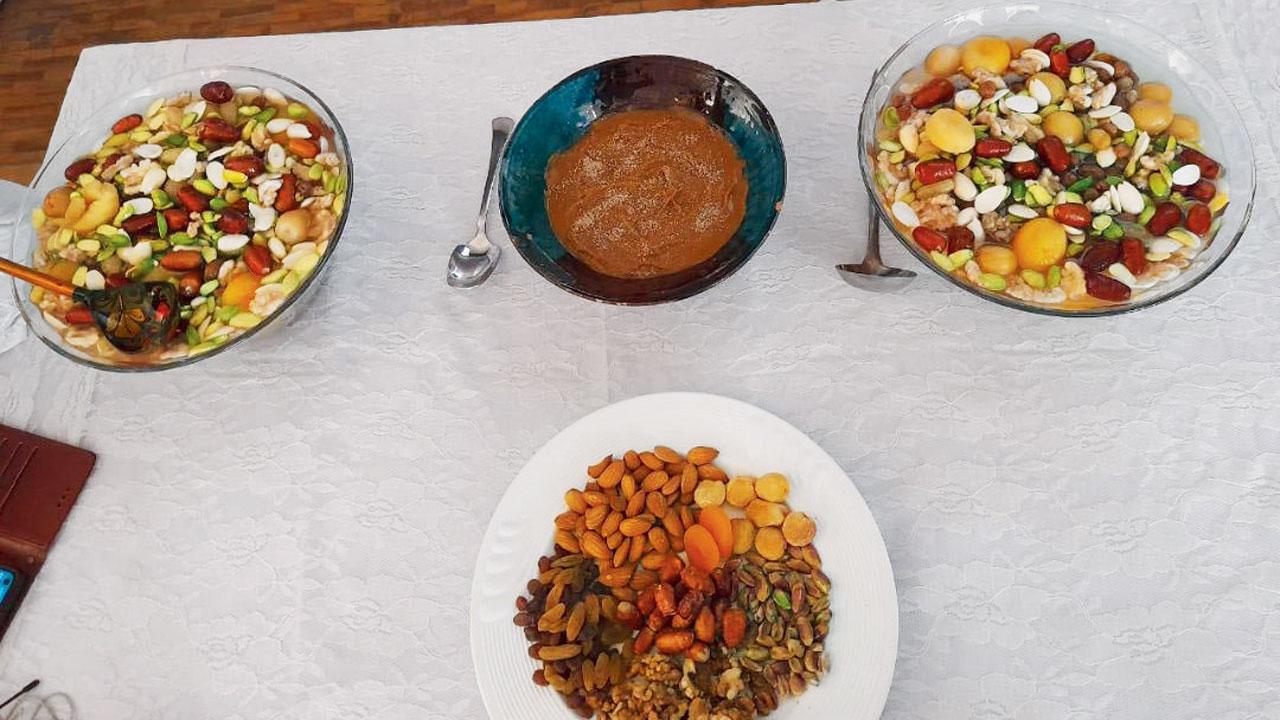
Khan says, “In Rampur, Uttar Pradesh, the credit for celebrating this ancient festival with great festivity goes to Nawab Sayed Hamid Ali Khan who, along with male members of the royal family and the court, attended the special prayers recited by the maulvi. New fruits, sweetmeats and grains were kept in silver qaabs or serving dishes. At the centre of the dining table, seven ground grains were arranged in silver dishes. A rose would float on water in a silver bowl.”
Though now the celebrations have toned down considerably, some still cook up and decorate a cornucopia of haft sin—kababs, pulao, qorma, boiled eggs, grains (sattu), fruits and sweets. At the centre of the table, in a crystal bowl, a red rose still floats in water. It is said that if the rose is put in the water at the exact time of the equinox or when the Sun enters Aries, it will chart a circular path in the water.
The lady of the house inscribes prayers in Arabic with a reed pen dipped in saffron water on white ceramic plates for prosperity and protection from the evil eye. The ‘panja’ (hand) emblem of Hazrat Ali and the banners of Imam Jafar occupy a prominent place on a table that also holds red mannat threads representing prayers by family members. At the prescribed time, when the Sun enters Aries, red and green candles are lit with a single white candle and family members stand up to recite prayers.

Dr Tarana Hussain Khan and Laila Azimi
“The rose moves on its own in the centre and around the bowl, if our wishes are granted,” says Khan. “We partake of the blessed food, a Sayyed lady taking the first serving. A bamboo fan is dipped in holy water, sprinkled over us and in all corners of the house. Later, the saffron writing is washed away into the rose bowl, and that water is also sprinkled in all corners of the house to ward off the evil eye. In the year the pandemic first engulfed us, the unthinkable happened. Black was declared the Navroze colour by clerics in Iran. It was not the colour, but the lack of thereof. Even the eldest members of the community did not remember black ever being the prescribed Navroze colour; how can the colour of mourning symbolise new beginnings? The Sun was to move into Aries at 3.07 pm on March 20. As if the colour of Navroze wasn’t portent enough, the black rose floating in the bowl of water didn’t move at all.”
Consultant chef and author Sadaf Hussain remembers the Navroze of Lucknow, celebrated in homes and imambaras, alike. “It is believed that Hazrat Ali, the son-in-law of Prophet Mohammed was anointed Caliph on this day,” he says. “The time and colour of the festival are decided by clerics in Iran. This year, it is red and hence, all the food on the dastarkhwan would be red in colour or its shades—red qorma, red zarda and red naan. People even colour each other with it; a tradition perhaps inspired by Holi. Sadqa or alms are given out; since the season gets warmer, fans are donated.”
In the Valley
Kashmiri author Javed Beigh tells Sunday mid-day that the Kashmiri Pandit community is the only group to celebrate Navreh in the same manner as Parsi Zoroastrians and Iranian Shias—a symbolic display of seven or more items for fortune and gratitude. Displayed on a platter, called the thaal bharun, are coins, pens, grain, mirrors, holy books etc, each with a significance of its own.
“Thaal bharun and Navreh are traced to the Rig Vedic origin of Kashmiri Shaivism,” he informs us. “Kashmiri Pandits are the only members of the Hindu community that celebrate this Persian-Iranian festival. Many anthropologists and historians allude to the presence of a modified form of Zoroastrian faith called Avestan that spread over present-day Afghanistan, Tajikistan, Pashtun parts of northern Pakistan and Gilgit Baltistan. The surviving traces of Navroze means that ancient Kashmir was also part of this extended Eastern Persian cultural realm.”
The Shia Muslim community celebrates on a large scale with special meals of fish and lotus stem (nadru), wearing new clothes, frequenting gardens, parks and taking family rides on shikaras, and most importantly, planting new trees. “It is a way of celebrating man’s ties with nature and thanking God and Mother Earth for its limitless bounty,” says Beigh.
“The spirit of Navroze and Navreh lie in the age-old secular spirit of Kashmiriyat, where Hindu Shaivite and Sufi Islam as well as Shia and Sunni brotherhood all came together to welcome the advent of spring after months of harsh winter in a non-religious manner. It is the true spirit of one Koshurness that encompasses all religions and sects of Kashmir. It is a pity that the celebrations of this wonderful festival, which is an important part of Kashmiri culture, have been scaled down in recent times due to political turmoil. However, this year, we are seeing it pick up again.” Inshallah.
Rampuri Qorma
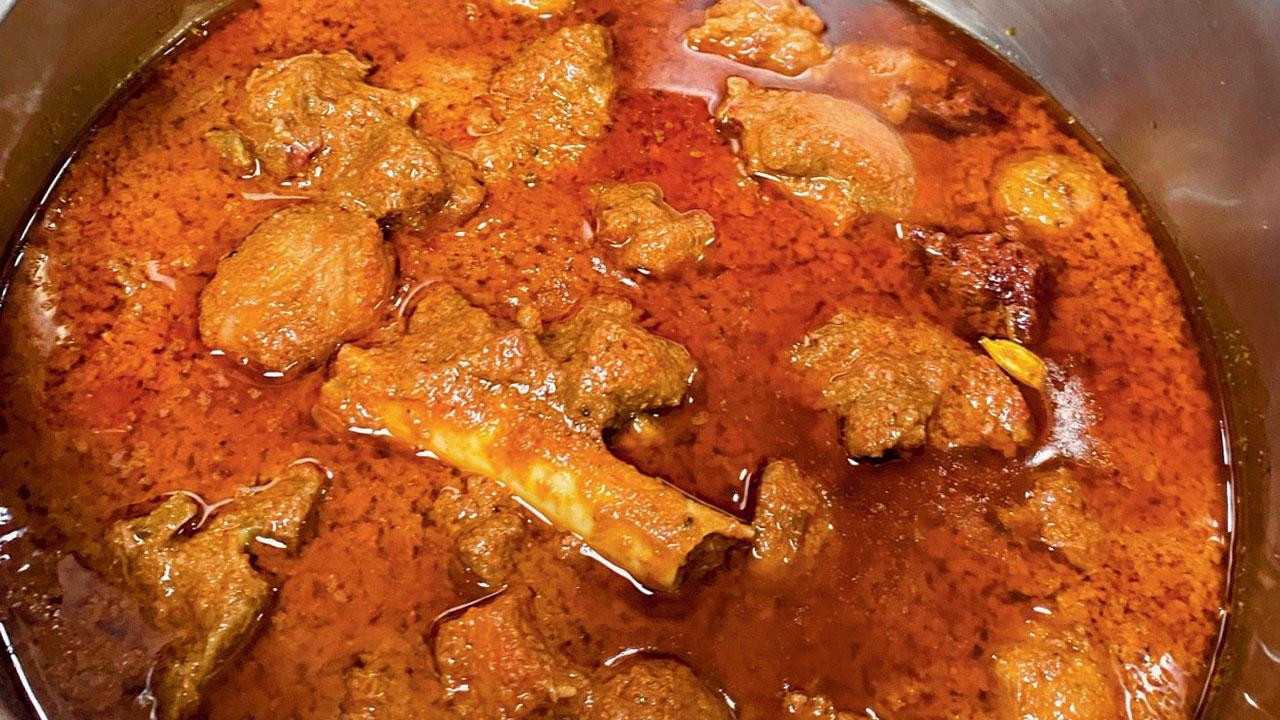
Ingredients
1 kg mutton or chicken
1/2 kg leg bones of goat
1 large cup milk
1/2 cup cream
100 gm almonds
5 gm saffron
4 large onions, finely diced
1 cup ghee or refined oil or
3/4 cup ghee
3 tbsp onion paste
2 1/2 tbsp garlic paste
2 tbsp ginger paste
1 garlic
1 inch ginger, chopped coarsely
1/2 cup yoghurt
2-3 tsp red chilli powder (or as per taste)
4 tsp coriander powder
2 tsp green cardamom powder
10 green cardamoms
6 cloves
5-6 black cardamoms
6-7 bay leaves
1 tsp garam masala powder
1 tsp aromatic masala powder
4-5 drops kewra water (optional)
Salt to taste
Method
1. Marinate the meat in curd and cream. In a separate bowl, mix the masalas—onion paste, ginger paste, garlic paste, red chilli powder and coriander powder. Set aside. Soak saffron in some milk or kewra. Blanch the almonds and grind them to paste.
2. Wash the bones and put in pressure cooker using about 500 ml water. Add 4-5 garlic cloves, chopped ginger, 1 chopped onion and a few bay leaves. Pressure cook till the gelatine and marrow become soft. The stock should be thickish. Add half of the milk and boil for 5 minutes. Temper with 3 whole cloves and 3 crushed cloves of garlic.
3. In a large pan or pressure cooker, heat the ghee, add the onions and fry till golden. Strain and take out the onions, let them cool, then grind with green and black cardamoms and cloves.
4. Add the marinated meat into the ghee, fry a little and then add the masalas mixed earlier (in step 1). Add bay leaves and let it cook. Keep adding splashes of milk and sauté the meat till the oil separates. If chicken meat is used, first fry the chicken and remove it from the ghee. Then add the masala mixture and sauté.
5. Add about 500 ml of stock to the curry, and keep cooking till the meat becomes tender. (Fried chicken can be added back to the curry at this point.) If the meat is not done, boil a cup of water and add. If using a pressure cooker, less water will be required, but the curry comes out better if slow-cooked in a pan.
6. When the meat becomes tender, add the fried onion paste and almond paste. Check the consistency of the curry. It needs to be thickish and not too runny. If needed, continue to cook to reduce the water. Add the green cardamom powder, garam masala powder and aromatic powder when it is done.
Jamshedi Navroze special menus
For Zoroastrians, the Jamshedi Navroze, is named after Peshdadian ruler Jamshed. As per the Iranian epic, Shahnameh, God forewarned him about a snowstorm that would submerge the world. He was advised to take a pair of each species of animal, and tide the great catastrophe over on a mountain. King Jamshed obeyed and established a settlement called Var-e-Jam-Kard (the settlement of Jamshed).
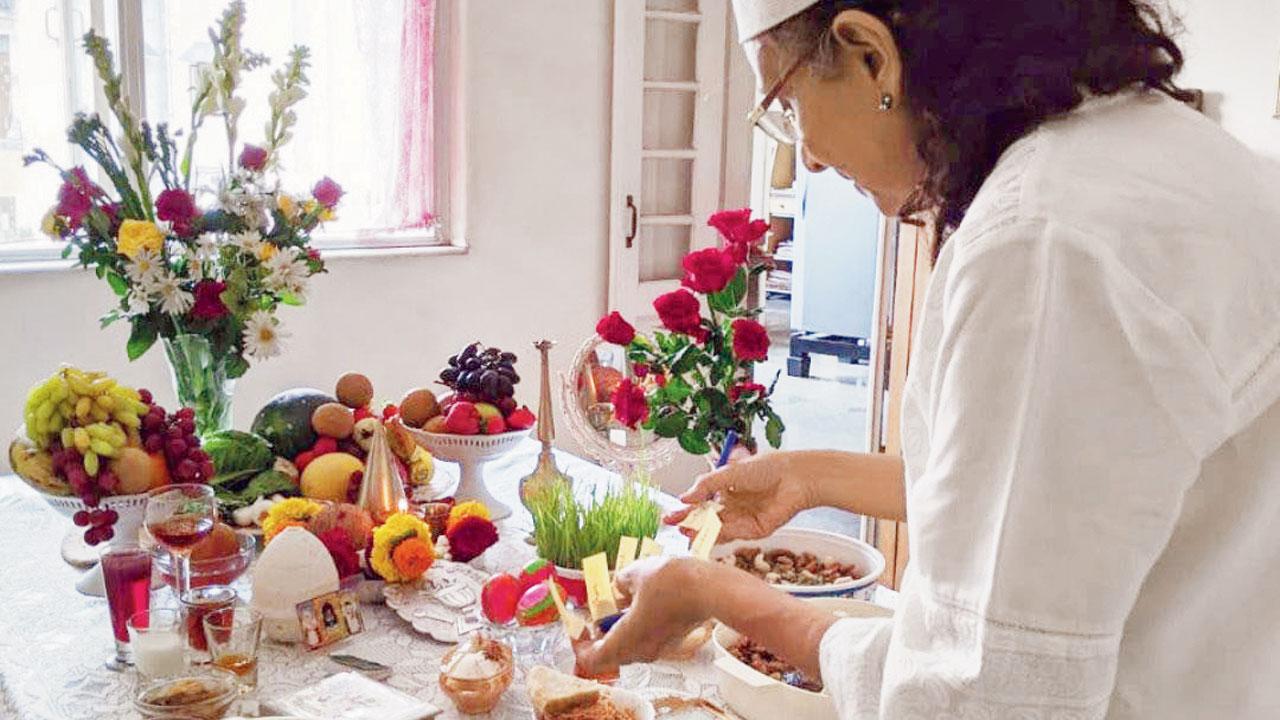
He was crowned on this day, and a jashan followed to commemorate the occasion in the kingdom. Thus, was born Jasmshedi Navroze. In addition to the items whose names begin with the sibilant ‘seen’ or ‘s’, there are seven items whose names begin with the ‘sheen’ or ‘sh’ as well. Nana chowk resident Katy Rustom says, “The seven items may include shir (milk), sharab (wine), shahed (honey), shegufeh (buds), shakar (sugar), shama (candle), somagh (sumac), and shikeh (coin).
There’s also sabzeh (wheat, or barley sprouts symbolising plants), goldfish symbolising animals, and painted eggs symbolising humans and fertility.” Besides the staples, the sky is the limit to personalising the table. “We keep produce grown on our chikoo farms,” she adds, “The Avesta or holy book and an Iranian scarf are present too. There’s a mirror, in which you look and sprinkle your face with rose water and reflect on your past actions. Zoroastrianism is an ecological religion and is rooted in nature, spreading wellness, and maintaining the Earth and all its bio-diverse forms. The Navroze table is a representation of that. Nature gives in abundance if we look after it.”
Jamshedi Navroze special menu
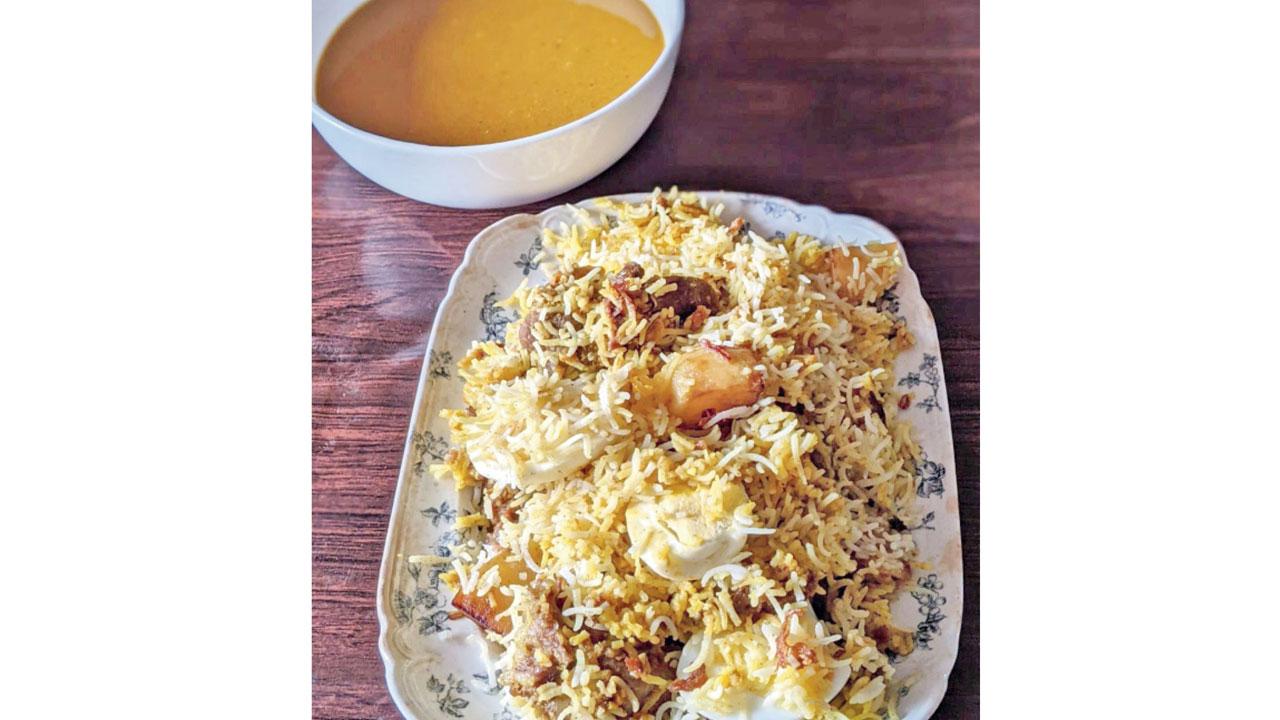
Keeping it simple
This year, the tiny taster, Roxanne Bammboat is keeping it straightforward with staples that her clients enjoy. “Salli chicken is always a hit so it’s on, but I’m doing a Parsi-style mutton pulao dal which isn’t on my regular menu. There is lagan nu custard and to complete the bhonu experience, I’m adding fried crisp sariyas, usually found on a Bhonu patru and a raspberry drink,” says Bammboat.
>>>
PRICE: Rs 100 onwards
WHEN: March 19 to 21 for lunch
CALL: 9820862062
Of bira and banta
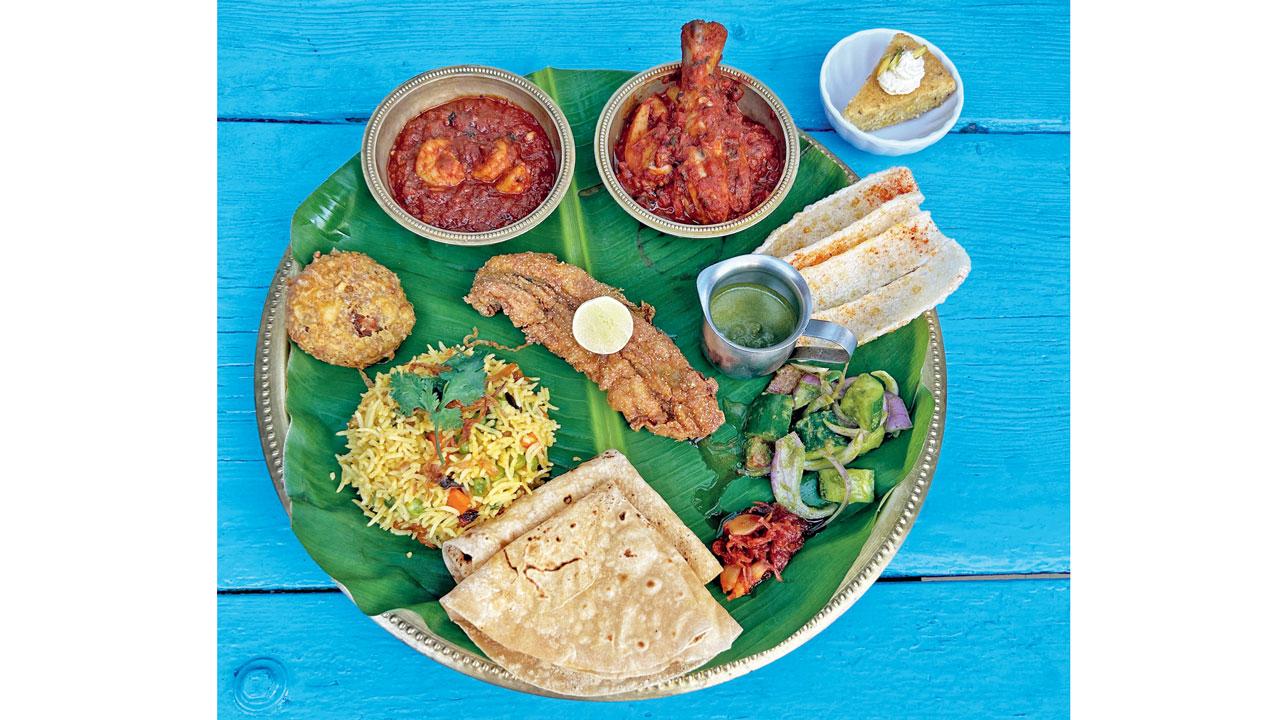
Sodabottleopenerwala is doing pre-booked orders for veg bhonu that includes vengna na patio, tarkari in curry with raisins, gawar falli cheesy cutlet, lal patrani paneer, gehu ni rotli, gajar matar nu pulao, saria papad, kachumbar, gajar nu achar, rawa and pistachio cake. The non-veg variant has chicken bafat curry, kolmi na patio, mutton cheesy cutlet, mandeli or bombil fry. There’s a complimentary beer or banta soda with every meal.
>>>
Sodabottleopenerwala
PRICE: Rs 845 (veg) Rs 1,045 (non veg) all inclusive
WHERE: BKC and Thane outlets
Limited edition
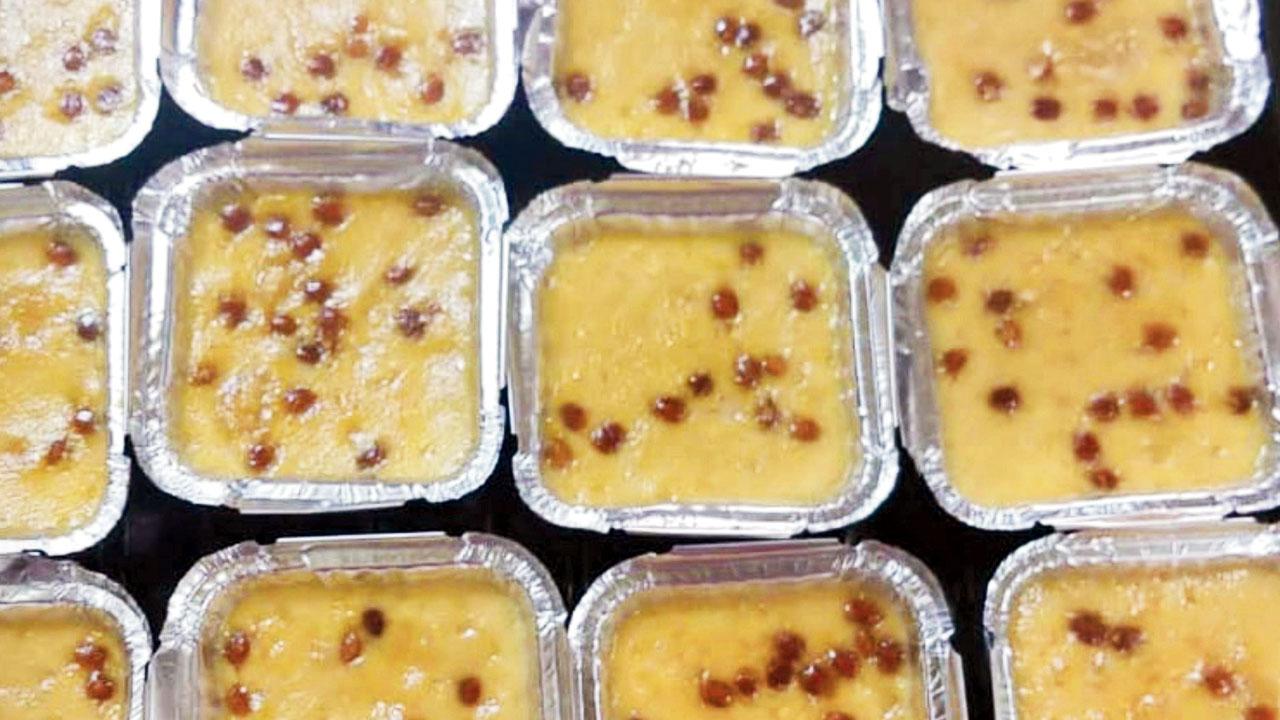
The Navroze menu at The Parsi Kitchen by Sanober Anklesaria has Kashmiri chicken pulao dal that has chicken kebabs, boiled eggs, fried potatoes and dried fruit; Shepard’s pie that’s baked to perfection, and lagan nu custard, made from rich, creamy milk.
>>>
The Parsi Kitchen
PRICE: Rs 300 onwards
CALL: 9920751217
A simple affair
Shehzad Marolia of Farohar caterers has planned a meal for two, offered in two options. First, patra ni macchi, salli marghi, mutton pulao dal. The other is saas ni macchi, salli boti, chicken pulao dal. Both meals have achar, roti, lagan nu custard and raspberry. Some items are available a la carte too.
>>>
Farohar Caterers
PRICE: Rs 2,700 per meal
CALL: 9321583595
 Subscribe today by clicking the link and stay updated with the latest news!" Click here!
Subscribe today by clicking the link and stay updated with the latest news!" Click here!












